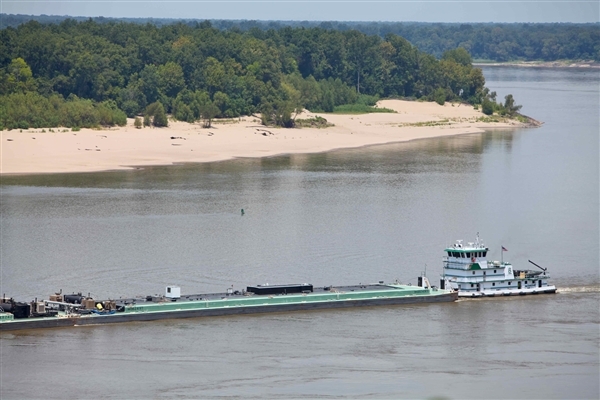The continuing drought is wreaking havoc on the ability of the Mississippi River to function as one of our nation’s primary commercial arteries.
If water levels continue to fall, as much as $7 billion of products, including petroleum, coal, chemicals and agricultural products, will be stalled in the next two months, according to a Nov. 28 report by the American Waterways Operators, the major trade group representing barge traffic.
Monique Farmer, a spokeswoman for the U.S. Army Corps of Engineers, which is charged with maintaining a nine-foot minimum depth navigation channel on the Mississippi, told the New York Times in a Nov. 26 article calling for the release of Missouri River water into the Mississippi: “We do not have the legal authority to operate the Missouri River solely for the benefits of the Mississippi River.”
In fact, the Corps is making matters far worse under the delusion that it has no choice but to follow inflexible orders to reduce the flow of the Missouri River into the Mississippi River. The Corps reduced the flow from 37,500 cubic feet per second (cfs) in the fall down to 12,000 cfs by mid-December. This was accomplished by holding back the flow of the Missouri River at the Gavins Point Dam near Yankton, S.D.
The current level of water on the Mississippi is already forcing barges to carry less cargo in order to ride higher in the water — which, of course, is inefficient but will soon be limited by the availability of tow boats that can travel in shallow water.
In limited defense of the Corps, they are willing to attempt to remove submerged rock formations called pinnacles that create the greatest bottleneck for river traffic near Thebes and Grand Tower, Ill. But most believe this complex blasting project cannot be completed until February.
The Corps’ unwillingness to save the day by increasing the flow of the Missouri River into the Mississippi stems from the 1944 Flood Control Act — which authorized a dam and reservoir system on the Missouri River to control flooding and provide steady water for navigation downstream. The details beyond the act were written into a “master plan” shortly thereafter, then each year an “operating plan” is developed to guide the specifics of the river management.
The Corps is now taking the position that the master plan does not authorize it to intercede on behalf of the Mississippi, and is thus operating as though the Missouri has no bearing on other national navigation problems. While, indeed, the Flood Control Act of 1944 has its primary focus on flood control, most legal scholars believe the act offers the flexibility to mitigate disasters out of its own watershed.
This position is certainly shared by 15 U.S. senators and 62 U.S. congressmen who signed letters to Jo-Ellen Darcy, assistant secretary of the Army for civil works, imploring the secretary to allow the Missouri River system to come to the aid of the Mississippi.
Nearly everyone but the Corps believes the “master manual” laid out following the 1944 legislation allows the Corps to vary its basic operations when conditions change or unforeseen conditions require it to do so.
In a Nov. 14 letter from Illinois Gov. Pat Quinn to Darcy, Quinn points out the Corps has deviated from planned operations on numerous occasions — including canceling 11 of 14 spring rises on the Missouri River since 2006 and occasionally releasing additional water during the winter to meet drinking water and power generation demands.
The governor pointed out that 75 percent of the water designated for downstream use remains available in Missouri River reservoirs. In fact, on Sept. 25, the Corps itself stated that surplus water can be made available for municipal and industrial uses for a period of up to 10 years without affecting the existing lawful uses of such water.
Why then is the Corps stonewalling the cries from legislators and governors and every barge owner on the Mississippi – and eventually half of all Americans who will ultimately feel the pain of the loss of transportation of so many of their raw materials, and the loss of thousands of jobs relating to this impending disaster?
Sen. Tom Harkin, D-Ia., the principal author of the letter from the 15 senators, was quoted in the New York Times article of Nov. 26 as “calling for President Obama to issue an emergency declaration to increase water flow from the Missouri.”
Surely we have enough natural disasters plaguing society that we do not need one exacerbated by bureaucratic intransigence.
[First published in the Des Moines Register.]





